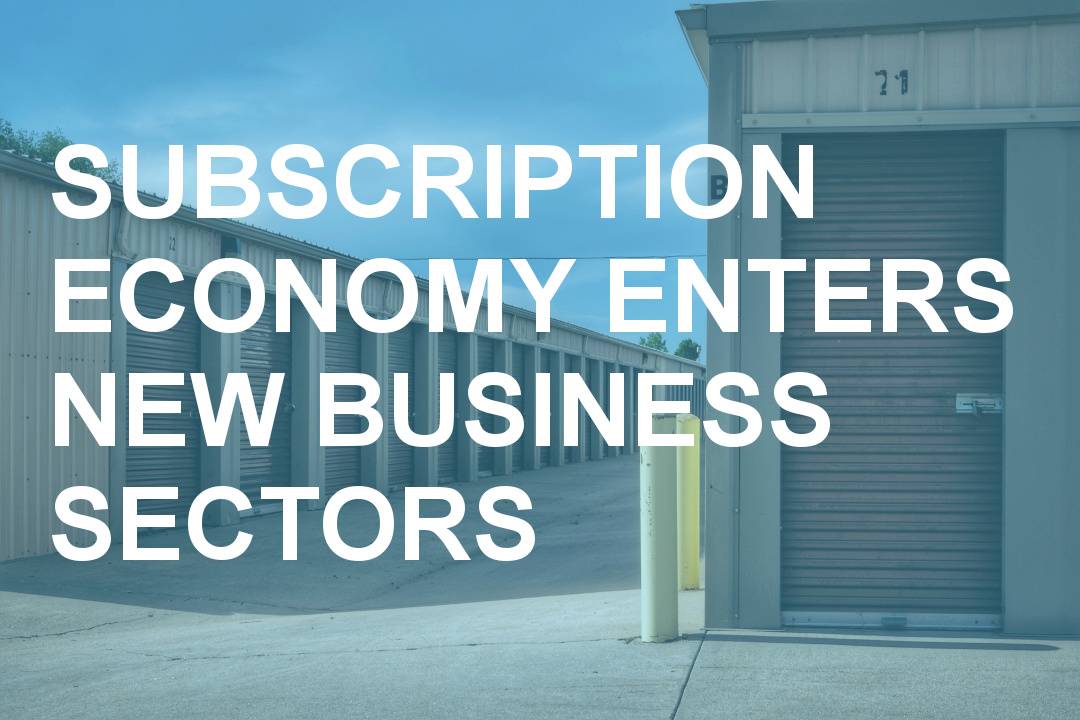It’s no secret that the subscription market is booming – it has more than doubled every year since 2011, rising from $57 million to $2.6 billion in just five years.
In fact, in a recent 5-year time span, companies part of this subscription economy grew 900 percent faster than the S&P 500 average, 420 percent faster than the U.S. retail market and 500 percent faster than the overall U.S. economy.
Traditionally the business model of paid media services, including classic cable and satellite providers to internet service providers and telephone companies, subscription offerings are now leading businesses like Salesforce, Spotify, OnStar and even Amazon to success as consumers turn to budget-friendly ways to secure all the things they love to buy.
Subscription services are in such high demand that Zuora founder and author Tien Tzuo warns that failing to adopt the strategy could prove a fatal decision for business owners.
“If you’re not shifting to this business model now,” Tzuo wrote in his book, Subscribed: Why the Subscription Model Will Be Your Company’s Future – And What to Do About It, “chances are that in a few years you might not have any business left to shift.”
What is the Subscription Business Model?
Used since the 17th century, the subscription business model is fairly simple: the customer pays a recurring price at regular intervals – often monthly or annually – to receive a product or service.
Now used by everything from digital services to home maintenance, the business model was initially popularized by the publishing industry as customers subscribed to receive periodical magazines and newspapers. Some modern businesses – like Dollar Shave Club, Ipsy and other subscription boxes – still follow this business model.
Later subscription services were offered by businesses such as fitness centers, clubs, cable television providers and wholesalers. In these cases, customers are purchasing a subscription to access a service, not to take ownership of a product. Many modern subscription-based businesses follow this model, whether customers are subscribing to receive HVAC maintenance, discounts on shoes, free shipping or access to vast media libraries.
“The reality is ownership is dead,” Tzuo said in an interview with the Stanford Graduate School of Business. “Now it’s really about access as the new imperative.”
Why the Subscription Business Model?
Why is the subscription model so popular?
- Subscriptions save customers time and money on purchases they make on a regular basis.
- Subscriptions offer customers convenience and peace of mind knowing their favorite products or services will be ready for them when they need them.
- With subscriptions, customers know exactly how much to budget each month for certain regular purchases.
- Subscriptions promote repeated use of a product or service, building brand loyalty and long-term customer relationships.
- Subscriptions benefit businesses because they assure a consistent revenue stream and provide payment in advance of delivering goods or services.
- Subscriptions provide businesses a way to track and analyze sales and customer data to improve marketing and retention practices.
- The subscription-based business model creates an ongoing responsibility for businesses to meet customer expectations compared to those whose profits are driven by individual purchases.
“The more guaranteed revenue you can offer a potential acquirer, the more valuable your business is going to be,” John Warrillow, creator of the Value Builder System, told Entrepreneur. “Because a high percentage of the revenue of a subscription-based business is recurring, its value will be up to eight times that of a comparable business with very little recurring revenue.”
The Subscription Business Model Enters New Sectors
The subscription business model is being adopted by a growing list of sectors, including retail, groceries and more recently home and building services.
That’s not to say the local plumber or HVAC technician is going to offer homeowners and building managers an all-access plumbing membership (although it’s a distinct possibility). Instead, companies like Motili feature nationwide networks of experienced local contractors, and they can handle maintenance and repair requests for their users.
“A lot of the technologies I’ve seen in the property management space are trying to solve the day to day operational issues of leasing managers and service managers at the building level and then giving some visibility back to the regional and corporate procurement folks in terms of speeding up work orders, and being more effective and making purchasing decisions,” Motili VP, Matthew Sallee, explained.
Motili users not only benefit from the convenience of on-demand service and simple billing, but they also save money on discounted equipment and reduce overall operational costs by using Motili’s analytics platform.
“Customers benefit from robust technology that quickly connects them with a national network of skilled technicians associated with Motili,” Motili CEO Jeff Wilkins told HVACR Business. “We provide the simplicity of a single point of contact across the U.S. Motili delivers savings to our customers through more efficient sourcing and automation.”












